
This week, part 2 of our 2018 Summer Reading List. This list is a compilation of books that have been reviewed on Ukrainian Jewish Heritage here on Nash Holos.
Books can entertain, inform, edify. But they always enrich minds – those of the reader but also of the author – some of whom are inspired by the writing a book to write more on a topic that intrigues them. That includes a few of the authors in this list.
So here are seven more books recommended by Nash Holos Ukrainian Roots Radio and the sponsor of this series, the Ukrainian Jewish Encounter, for your summer reading pleasure, and edification.
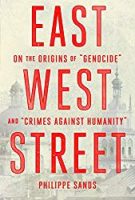 East-West Street tells the story of two jurists from Lviv who were instrumental in shaping the precedent setting Nuremberg trial.
East-West Street tells the story of two jurists from Lviv who were instrumental in shaping the precedent setting Nuremberg trial.
Most people the world over still really have no idea of the origins of the term genocide, which like the Holocaust, is in danger of becoming an empty cliché instead of a powerful metaphor for the capacity of man’s inhumanity to man. East-West Street is a gripping account of the origins—in effect, the invention—of the terms “genocide” and also “crimes against humanity.”
These two concepts became the centerpiece for the prosecution of Nazi war criminals.
The author of EAST WEST STREET, Phillipe Sands, brings together the stories of his grandfather and these two jurists from Lviv, Rafael Lemkin and Hersch Lauterpacht.
All three men had the misfortune of having their entire families sent to their deaths by the Nazi governor of German-occupied Poland Hans Frank, who visited Lviv in 1942. In an astonishing twist, Sands met and got to know the son of Hans Frank while working on this book. Sands also met the son of another Nazi, Otto von Wachter, who was in charge of Lviv during the Second World War.
What the reader will find in this fascinating book is that in the face of horror it is possible to find the courage and strength to achieve extraordinary goals.
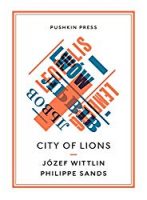 City of Lions is a story about Lviv, the western Ukrainian city often referred to as the Vienna of the east.
City of Lions is a story about Lviv, the western Ukrainian city often referred to as the Vienna of the east.
The book consists of an essay by Polish author Josef Wittlin who waxes eloquent about an early twentieth century Lviv still glittering with an imperial Austrian splendor. It was a city that ceased to exist by 1945.
A matching essay My Lviv by Philippe Sands, echoes the Wittlin text but brings Lviv into modern times.
Sands calls out the failure of those in today’s Lviv to fully acknowledge all its history; but nonetheless he admits the ineffable spirit of the city ultimately seduces him.
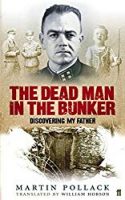 Author Martin Pollack has written three books that reveal some startling facts about Galicia and its fascinating history.
Author Martin Pollack has written three books that reveal some startling facts about Galicia and its fascinating history.
In The Dead Man in the Bunker, a man is found murdered in 1947 in the mountains between Austria and Italy.
He was not just any man. He was a highly ranked SS officer who commanded death squads in Eastern Europe and was head of the Gestapo in the Austrian city of Linz. And he was the author’s father.
Martin Pollack developed an interest in Galicia after he was barred from Poland by communist authorities from 1980 to 1989. His first book cemented a lifelong passion for the subject: To Galicia: Of Hassidim, Hutsuls, Poles, and Ruthenians. An Imaginary Journey Through the Vanished World of Eastern Galicia and Bukovina. (In German and Polish only.)
Until 1918, Galicia was a part of the Austro-Hungarian Empire. It was actually an enlightened empire; it provided emancipation for the Jews and institutionalized nation-building for both Poles and Ukrainians. But Galicia was the poorhouse of the empire. Grinding poverty sent massive waves of Jewish, Polish, and Ukrainian migrants to distant shores in a desperate search of a better life. Pollack relates this story in his book Emperor of America: The Great Escape From Galicia. (In German and Polish only.)
Poverty provokes pity, but also contempt. Pollack reveals that Hitler first met Galician Jews in Vienna before the First World War and expressed his hatred in Mein Kampf.
While Pollack laments the fact that Ukrainian Galicia still remains too little known among Westerners, his readers will not be among them.
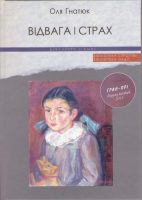 Courage and Fear is a devastating account of both the Soviet and Nazi occupations of Lviv in the Second World War.
Courage and Fear is a devastating account of both the Soviet and Nazi occupations of Lviv in the Second World War.
The author, Polish scholar and diplomat Ola Hnatiuk, focuses on the daily life and dire choices faced by Jewish, Polish, and Ukrainian writers, artists, musicians, academics, and medical community of the city.
This cultural elite outwitted, compromised with, or was destroyed by the barbarians in the garden. The author weaves in the story of her own family, depicting the demoralization and psychological shock afflicted by totalitarian techniques.
The historian Timothy Snyder praises the human dimension expressed in this book, a richer dimension than the usual ode to tolerance or nostalgia for a long lost past.
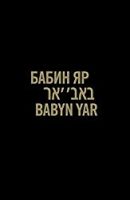 Babyn Yar, in the Ukrainian capital of Kyiv, is one of the most notorious sites of Nazi atrocities during WWII.
Babyn Yar, in the Ukrainian capital of Kyiv, is one of the most notorious sites of Nazi atrocities during WWII.
It became symbolic of the Holocaust to the world beyond Ukraine, although to Ukrainians it symbolizes many tragedies that took place during the Nazi occupation. Over 100,000 victims of Nazi tyranny lie at the bottom of this ravine, including 34,000 Jews who were slaughtered over the course of just two days.
Babyn Yar: History and Memory, is a bilingual collection in Ukrainian and English of scholarly essays dedicated to the commemoration of the seventy-fifth anniversary of this atrocity.
This book is the result of the collaborative effort of scholars working with the editors Vladyslav Hrynevych and Paul Robert Magocsi. The scholars are from various disciplines in Canada, France, Israel, the Netherlands, Ukraine, and the United States.
At the center of the book of course is the history of a Nazi crime. But this book also covers the politics of memory and forgetting through the soviet era and up to the present day.
The essays provoke questions for further discussion, especially since the various authors may raise the same questions but do not always arrive at the same answers.
As the editors remind us, to know and remember the Babyn Yar tragedy means not allowing such a crime to be repeated. And in the Ukrainian experience, Babyn Yar is also a symbolic farewell to empire and its mythological legacy.
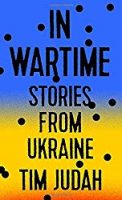 While war drives wedges between people, the aftermath can bring them together. Perhaps the effort to understand how those wedges were created can one day create a strong and hopefully unbreakable bond.
While war drives wedges between people, the aftermath can bring them together. Perhaps the effort to understand how those wedges were created can one day create a strong and hopefully unbreakable bond.
Today Ukraine again finds itself at war, as usual one provoked by an outside force coveting the rich resources of Ukraine and its inhabitants.
Tim Judah looks at wedges. He is a reporter for The Economist who covered the war in Ukraine for The New York Review of Books.
His book, In Wartime: Stories from Ukraine is a portrayal of today’s Ukraine for the Western reader. Judah traveled far and wide throughout Ukraine.
He witnessed some horrifying scenes on the front lines of the war in Donbas. He talked with people … impoverished refugees, elderly villagers, city sophisticates, and wealthy businessmen.
Judah was covering and writing about Ukraine in a period of traumatic transition. And he reminds us that these traumas often arise suddenly. The long-established order can vanish overnight.
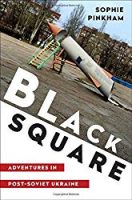 Black Square: Adventures in Post Soviet Ukraine reveals a world not often seen by foreigners.
Black Square: Adventures in Post Soviet Ukraine reveals a world not often seen by foreigners.
Author Sophie Pinkham plunges into the chaotic harm reduction world of sex workers, junkies, and other lost souls in contemporary Ukraine.
Her adventures in what she calls “post-Soviet punk delirium” include an encounter with the Last Jew in Stalindorf who recounts how once upon a time the Jews, Ukrainians and Russians there had gotten along, more or less, until Stalin starved them.
She also encounters a klezmer musician, a Yiddish teacher, Babyn Yar and the Maidan.
These books were reviewed on Nash Holos Ukrainian Roots Radio as part of the Ukrainian Jewish Heritage series, sponsored by the Ukrainian Jewish encounter. We hope to add to them in the near future.
Meanwhile if you would like to read any of them this summer, check your nearest public library. You can find a transcript of this list on the Nash Holos blog along with photos of the book covers and links to where you can purchase them if you’d like to support the authors and this program.
The audio files and transcripts of the full book reviews are available at our website as well as at Ukrainian Jewish Encounter.
So until next time, Shalom! And happy summer reading.
30 –
Ukrainian Jewish Heritage is brought to you by The Ukrainian Jewish Encounter based in Toronto, Ontario. To find out more visit their website (here) and follow them on Facebook and Twitter.
![]()
Tune in to the Vancouver edition of Nash Holos Saturdays at 6pm PST on CHMB Vancouver AM1320 or streaming online.
As well, the Nanaimo edition airs on Wednesdays from 11am-1pm on air at 101.7FM or online at CHLY Radio Malaspina. As well the International edition airs in over 20 countries on AM, FM, shortwave and satellite radio via PCJ Radio International.
In between broadcasts, please follow @NashHolos on Twitter and Like the Nash Holos Facebook page. I love to hear from you so please send me your suggestions, dedications and requests here. Your comments are always welcome!

